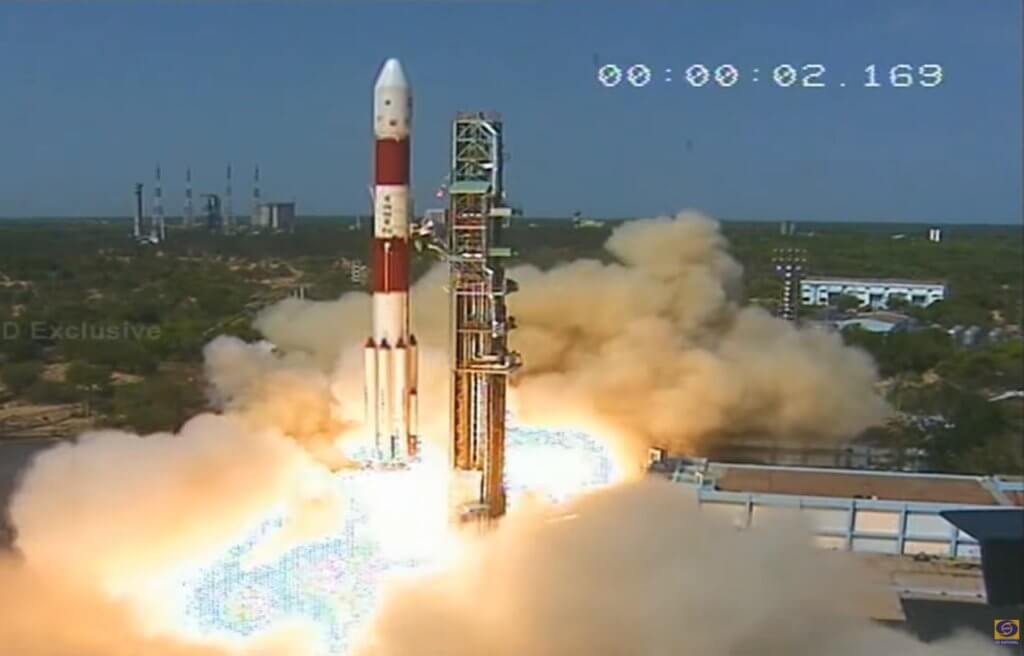At 0359 GMT at 23 June a PSLV-XL rocket lifted off from the Satish Dhawan Space Center, Sriharikota Island, India. The launch was the 40th flight of the PSLV (Polar Satellite Launch Vehicle) in total, and the 17th utilising the “XL” configuration – with 6 S12 solid boosters. The primary payload on the launch was CARTOSAT-2E, the sixth in a line of civilian/military Earth Observation satellites. Alongside the primary payload, the rocket carried 29 cubesats for international customers and one Indian microsatellite. While 31 satellite payloads carried is an impressive number for a single launch, this compares to a PSLV launch earlier this year which flew 104 satellites.
The mission’s total payload mass was 995 kg, 712 kg of which is represented by the primary payload, CARTOSAT-2E. The rest of the satellites consisted primarily of varying cubesat configurations, plus two larger microsatellites; the 15 kg NIUSAT from Noorul Islam University, India, and the 50 kg CE-SAT 1 from Canon Electronics, Japan. Amongst the cubesats on-board were eight Lemur spacecraft from the US firm Spire which have a dual meteorological/ship tracking role, and the first two satellites for Latvia (VENTA-1) and Slovakia (skCUBE). There was also three test communications satellites aboard for the new low Earth orbit Sky and Space Global constellation.
ISRO (Indian Space Research Organisation) is expecting to launch two more PSLV missions this year – for a total of four over the year – alongside potentially two more GSLV Mk II missions.






